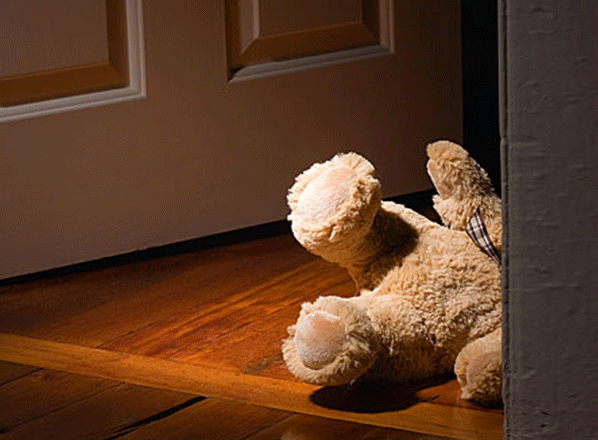6 Tips for Getting Your Toddler to Nap
Getting the naughty toddler to the bed is a tough job already, forget about making them sleep. The toddler is yawning, rubbing eyes, but keeps on playing or doing whatever he or she likes, shows every signs of exhaustion, but it’s impossible to coax him or her to sleep. They might be refusing to take a nap for many reasons, one of which may be the fact that this way the toddler wrests control form you.
Napping Toddler Happy Toddler
Recent research also corroborates to the age old belief that a toddler needs to nap for better growth and development, both physically and mentally. Children come as either ‘sleepers’ or ‘non-sleepers’, according to Jodi Mindell, PhD. As your child starts growing up gradually, you will be able to discern which one you have – and in case you have one that belongs to the latter category, read on to know how to get that impossible feat done with fewest sweats on your brow. Here are a few tips to help your toddler catch those precious forty winks.
-
Creating a sleep inducing environment:
- When you try to put your baby to bed, the best way to induce sleep in your child would be to introduce it to an environment with minimum light, backing up this fact there are studies which also show that dark rooms are better for sleeping.
- However as difficult as it may be to keep the room quiet as well, but try to make it as quiet as possible. In this scenario, using continuous white noise might be a good idea, as that helps in blocking intermittent sound and helps the child enjoy the nap. Naps being REM (Random Eye Movement) sleep, may break just like that, with slight disturbances.
-
Consistent nap time for babies:
There are several ways as a parent you could do to ensure that your baby gets enough sleep.
- For a baby, a routine is the way to feel safe and secure. The routine helps the toddler to know what’s next in line and the system gets prepared accordingly.
- Another possible idea is to discuss the whole plan of the day during breakfast that will mention a nap time, and follow the plan diligently as the day progresses.
- Having a routine pastime that helps your baby to fall asleep is advised , in general, like reading a story, when the toddler has been tucked in bed with his or her favorite teddy or toy. This slowly becomes a conditioned reflex for the toddler to sleep when these things start to occur.
- If the toddler is attending a day-care center or a preschool, it is advised to have co-ordinated same nap routine at both places. But you also need to make sure that the same routine is followed on weekends as well.
-
“Jobs to do” for your child:
Toddlers love to feel that they are grown up, and they have the affinity to help you in different chores as well.
For best results, assign your child a few jobs or assignment for a way to keep them engaged, this will have a positive role to play in their nap routine. Start with something like putting his/her favorite bear or toy away, and then ask him or her to bring it to bed for nap time. Do not do this every night, try to come up with newer and more exciting ‘duties’ for your child to perform every night – and you will gradually see him/her looking eagerly forward to nap time.
-
Let toddlers sleep on their own at night:
Toddlers are a bundle of hyper energy, and will often stay awake if not rocked, or nursed. Lulling them to sleep also works wonders for some time, but slowly this habit needs to be replaced.
When they are left alone and sleep on their own, they will find ways of entertaining themselves before drifting off to sleep. Once that habit develops, they will be able to nap on their own, during the day as well.
-
Time distraction:
You can try to increase the sleep pressure by different ways. One of the most favored ways is to put up the toddler a little than usual.
After all the toddler needs to feel sleepy in order to sleep!
-
“Break Time/Quiet Time”:
Make a “Break time,” and have set rules for them. Make it sound like a cease-fire. This time will have no TV, no lights on.
These rules will also include that during this time the toddler will have to lie in his/her bed and has to stay quiet. He/she might not sleep but the rest will energies him/her. Also set an alarm, which will indicate the end of “break time/quiet time.” You will also have the break for some time at least.
Why does your child refuse to sleep?
In the case of non-sleepers as discussed, the main reasons that sleep doesn’t come easy is because they are either afraid of the dark, or they are looking for their mother to accompany them, or they might be hungry or something similar to these. Read on to know how to recognize each problem and tackle them to get a good night’s sleep – for both you and your baby.
-
The baby tries getting out of bed:
The reason is because he/she doesn’t wish to go to sleep. Try quiet activities like a relaxing bath, reading or listening to soothing music and lullabies to lull your child gradually to sleep.
-
The baby takes a long time to fall asleep:
This could be chalked out as the parent’s or caregivers fault to introduce the baby to a routine of nap time. Without further ado, try to introduce a regular bedtime ritual, that will help you set a routine for your baby to go to sleep. With time, you will feel the baby adapting to this newfound routine.
-
The baby keeps calling out for you:
It is possible in case of toddlers to feel lonely while their parents leave them to sleep alone – but sleeping with them every night will only cause your child to become more dependent. In that case, you can try checking in at scheduled hours, and explain to your child that its not possible for you to always be with him/her – in the sweetest and most tender way possible.
If the child refuses to nap on his/her bed, and cries check on him/her, soothe him/her, but do not lie down beside her to put him/her to sleep. This will make him/her used to co-sleeping only. If the toddler absolutely refuses to nap, leave the child on its own with some assorted toys and books, clearly mentioning that its “break time/quiet time”. More than often you will find him/her asleep after some time. Don’t worry. sleeping on the floor is also beneficial for a child’s health.
Share your experience and reveal those well kept secrets which works the magic for your tiny tot.








